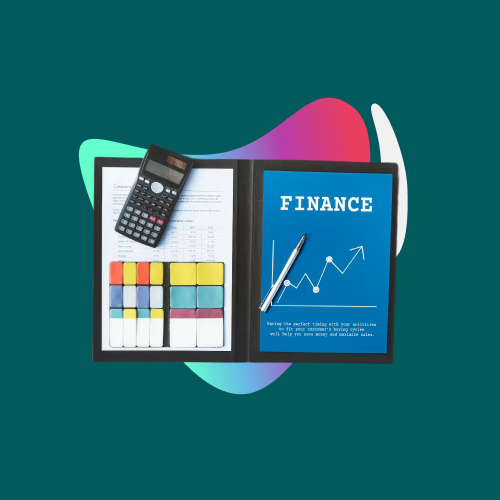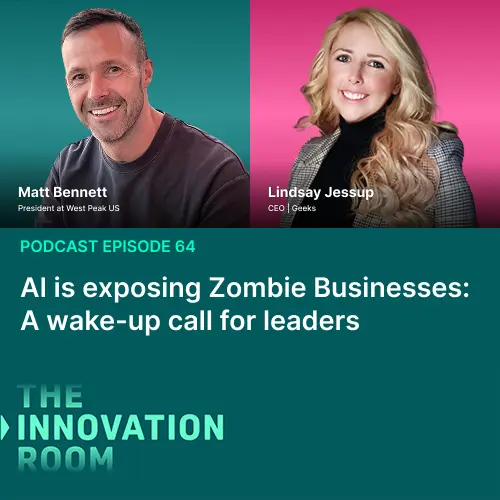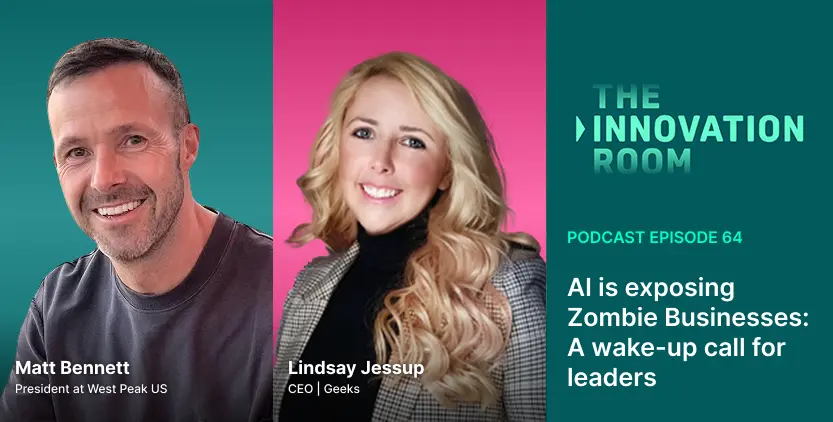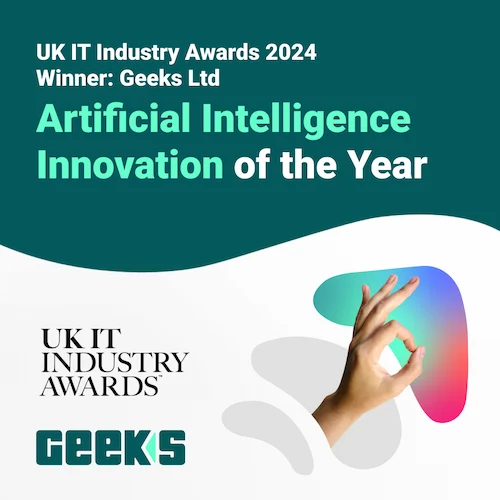
How AI Digital Transformation Is Reshaping the Supply Chain in 2025
In 2025, the supply chain is no longer just an operational engine. It is a strategic lever. Business continuity, growth, and resilience now depend on how well your supply ecosystem can sense, adapt, and respond in real time.
What used to be seen as back-office complexity is now central to boardroom conversations. And for good reason. Efficiency is expected. The differentiators today are visibility, adaptability, and speed of decision-making. This shift is not just about tools. It reflects the rise of AI digital transformation, which demands changes in mindset, structure, and long-term planning.
Why AI digital transformation now shapes business strategy
Traditional transformation efforts often focused on tools: new ERPs, automation platforms, custom integrations. But without a clear strategy, these investments can lead to more fragmentation, not less.
At Geeks, we’ve found that real progress starts with alignment, not automation. And this alignment must come from both a strategic understanding of business goals and a practical roadmap to execute against them.
Our Digital Transformation Strategy service is designed exactly for this purpose. We help businesses uncover where AI digital transformation will have the greatest impact and how to deliver it in a way that aligns with both current realities and future ambitions.
Why strategy must come before technology
One of the biggest blockers to meaningful AI digital transformation is not the lack of tools. It is the lack of clarity. Most organisations don’t suffer from too little data. They suffer from too little structure around how that data informs action. As Forbes has mentioned: explaining that AI is essential not just for data volume, but for turning that data into agile and intelligent supply chain decision-making
To solve this, we use the DiGence® Framework. This model brings together strategic alignment, capability mapping, and iterative delivery. It helps organisations move from ambition to execution with confidence.
In supply chains, that might include:
-
Linking predictive demand signals to production cycles
-
Automating supplier risk tracking
-
Creating unified visibility across procurement, logistics, and fulfilment
-
Introducing decision-support tools to reduce dependency on siloed knowledge
This approach recently helped Ignition Group, a manufacturer and distributor of energy-efficient heating solutions, improve visibility across their digitally enabled supply chain. With operations spanning product design, manufacturing, and direct-to-consumer fulfilment, they needed a clearer view of where inefficiencies were limiting scale. Using the DiGence® Framework, we identified misaligned processes and surfaced priority areas for investment. The result was a focused roadmap that allowed leadership to optimise supply operations and better align digital systems with business growth.
A leadership model built on Visibility, Resilience, and Speed
To move from firefighting to foresight, supply chain leaders must shift how they define success. At Geeks, we guide this shift using three transformation lenses:
1. Visibility
More than dashboards, true visibility means giving stakeholders access to reliable, real-time information across the entire value chain. This is the foundation of agility.
2. Resilience
Resilience means being prepared, not just recovering. AI-enabled supply chains monitor risk early and give teams the confidence to adapt quickly when conditions change.
3. Decision Velocity
Faster decisions require less friction between insight and action. Well-integrated systems, supported by AI, allow operational leaders to respond without hesitation or delay.
These are not technical upgrades. They are leadership priorities, and they require a coordinated transformation of people, process, and systems.
Supply chains are becoming intelligent ecosystems
The most successful organisations we work with are shifting away from rigid, centralised supply chains. They are creating flexible, connected ecosystems that evolve with the business environment.
These ecosystems often include:
-
AI-supported inventory planning
-
Compliance automation in line with ESG frameworks
-
Scenario simulation through digital twins
-
Real-time collaboration across internal and external platforms
This shift is also being reinforced by increasing regulatory pressure. From EU supply chain due diligence laws to sustainability reporting requirements, the ability to trace, prove, and adapt is no longer optional. That shift reflects new EU due diligence rules that require large firms to identify and address environmental and human rights risks throughout their supply chains.
Importantly, getting here is not about one big system. It is about developing a digital core that supports AI digital transformation through modular improvements that scale over time.
The next era of supply chain leadership
In the past, digital transformation in the supply chain was seen mainly as a technology upgrade. Today, AI digital transformation is about rethinking how decisions are made and acted on.
Ask yourself:
-
Are we clear on how AI digital transformation supports our business strategy?
-
Are we transforming operations or just modernising infrastructure?
-
Do we have a roadmap we can actually execute, not just a vision on paper?
If the answer to any of these is unclear, transformation is likely stalling. This is where structure matters. With a strategy-first approach and a repeatable, insight-driven framework like DiGence®, supply chain transformation becomes achievable, sustainable, and aligned with what the business actually needs to grow.
When every link in the chain can sense, decide, and act in real time, supply-chain leadership stops being operational firefighting and becomes strategic foresight. At Geeks, we call this the “Seconds to Signal” advantage via our Assess, Align Act DiGence Framework—the gap between the moment the market shifts and the moment your response is already moving. Teams that master it are not just efficient; they are unstoppable. Which side of that gap will you choose to lead from?










